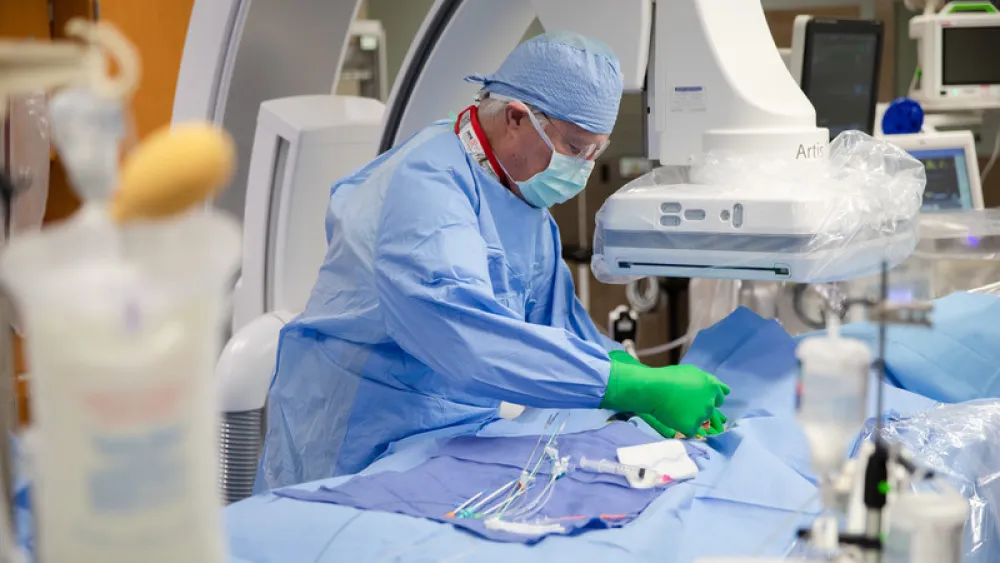




Today's Medicine
Structural Heart Disease: What It Is and How It's Treated
Published: Oct. 21, 2019

- Eating a healthy diet
- Getting plenty of exercise
- Limiting alcohol consumption
- Avoiding nicotine
- Managing stress
- Getting enough sleep
A specific type of heart disease
Structural heart disease – a more specific type of heart disease – is a less commonly used term. It involves the wear and tear of the heart’s tissues and valves.
The strategies listed above may also reduce your risk of structural heart disease, but some structural heart diagnoses are congenital, meaning some people are born with heart defects that lead to problems later in life. And everyone’s heart begins to wear out at some point. Think of your heart as a pair of tennis shoes. The more miles and years they see, the more wear and tear they show.
Most patients suffering from structural heart disease are older. In fact, roughly 12% of adults older than 75 are diagnosed with the disease.
Symptoms of structural heart disease
One of the cardinal complaints I hear from patients with structural heart disease sounds a lot like this: “Geez, Doc, that walk down the hallway felt like running a mile.”
Symptoms of structural heart disease vary from patient to patient but may include:
- Chest pain and/or tightening
- Dizziness or fainting
- Shortness of breath
- Difficulty exercising
- Fatigue
- Migraines
Valvular disease
Valvular heart disease is the most common type of structural heart disease. It generally refers to the narrowing or leaking of one of the heart's four valves, which are:
- The aortic valve
- The mitral valve
- The pulmonary valve
- The tricuspid valve
The aortic valve is one of the most commonly replaced valves, and the technology for this procedure continues to evolve.
Transcatheter repair and replacement
Gone are the days when all valve replacements required open-heart surgery. Transcatheter options – which largely used to be reserved for higher risk patients too vulnerable to undergo major surgery – are minimally invasive. They are performed through a small incision (usually in the groin), in which a thin flexible tube is inserted, then guided to the heart to implant the new valve into the bad valve.
Again, while transcatheter procedures were once considered an alternative for high-risk patients, studies show that low-risk patients also benefit from the less-invasive transcatheter method.
Benefits of transcatheter valve replacements include:
- Shorter hospital stay
- Better valve function
- Longer lifespan
- Improved quality of life
There is still very much a need for surgical heart procedures. But in most cases, the benefits of transcatheter methods continue to prove superior for valve replacement.
If you’re in need of an aortic valve replacement, ask your provider if a transcatheter aortic valve replacement (TAVR) is right for you.
More Resources
- Learn more about Methodist’s cardiology services
- Find a Methodist cardiologist
- Read about the importance of primary care and how it saved a patient's life
- Should you be worried about your chest pain? Read more

